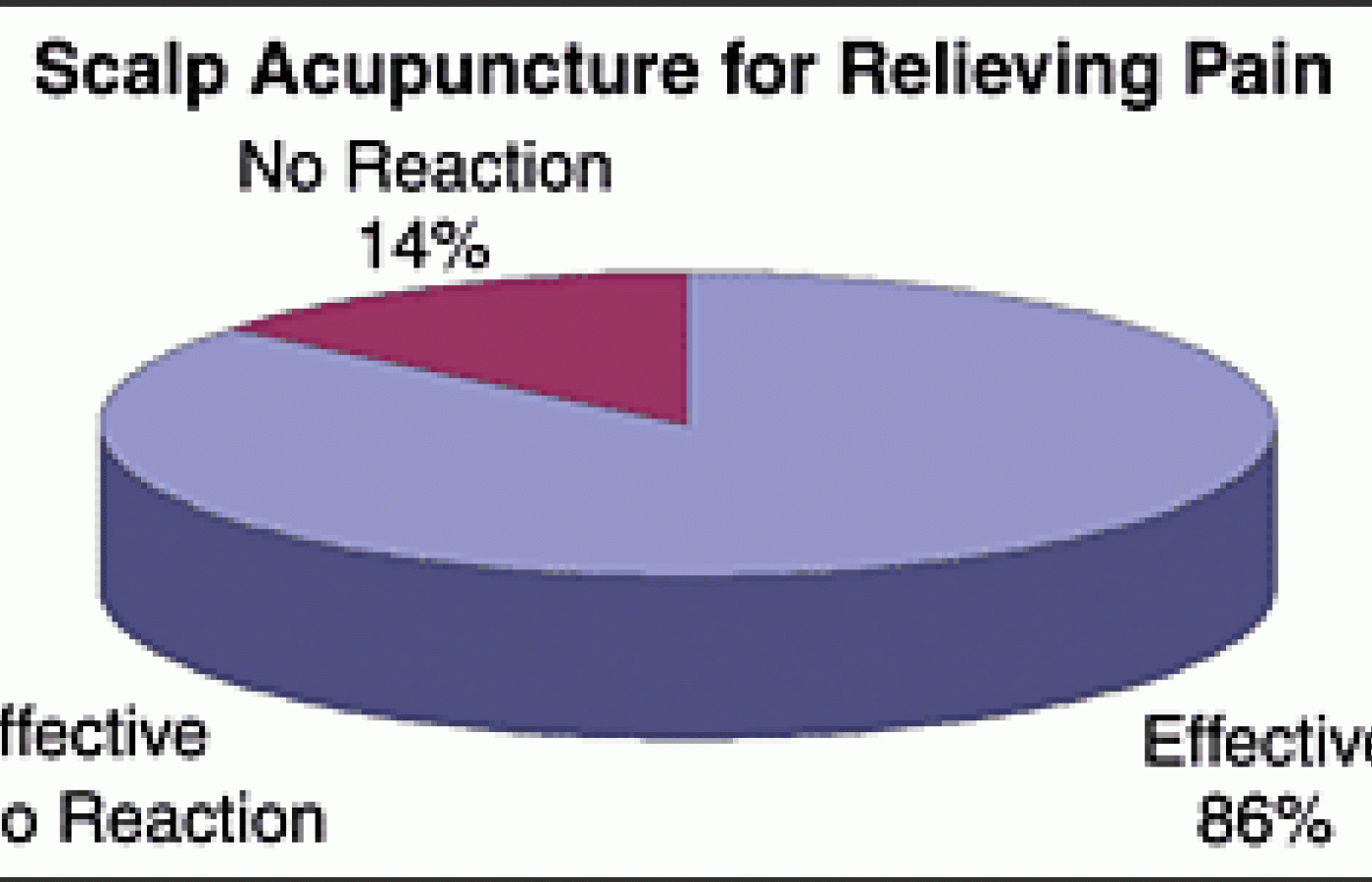Did any of you ever get the feeling in school that it simply was not OK to speak about wanting to be successful? To get into the nitty gritty details of how to make money in practice? Maybe you were even someone like me who was directly told by someone in a position of power that I needed to take what I could get because in private practice, I wouldn’t make money.
The Treatment of Phantom Limb Pain by Scalp Acupuncture
Phantom limb pain, residual limb pain and complex regional pain are common symptoms for patients with limb injuries and amputations. Several studies have shown that approximately 70 percent to 80 percent of patients develop pain within the first few days after amputation.
Phantom limb pain is the term for abnormal sensation perceived from a previously amputated limb. Patients may feel a variety of sensations emanating from the absent limb. The limb may feel completely intact despite its absence. The patients often described their pain as burning, squeezing and cramping, or as a prickling, shooting, or stabbing sensation. Residual limb pain is believed to come from injured nerves at the amputation site. Residual limb pain often is associated with phantom limb sensation and pain, and may be related in etiology. Complex regional pain is a "chronic pain syndrome with severe pain, changes in the nails, bones, skin, and an increased sensitivity to touch in the affected limb."
Several theories have been proposed regarding the cause of phantom limb pain. An understanding of the mechanisms underlying phantom pain is likely to lead to new and rational types of treatments. Some studies have indicated that phantom pain is thought to originate from the brain. When the area of the brain that controlled the limb before it was amputated no longer has a function, other areas of the brain fill in for it. There is a reorganization of the primary sensory cortex, subcortex and thalamus after amputation. The reorganization of the sensory cortex currently is considered to be responsible for phantom limb pain.
Conventional medicine has provided limited help in alleviating these types of pains. Acupuncture, on the other hand, is becoming a more popular method of treatment for acute and chronic pain among nonmedical treatment such as transcutaneous electrical nerve stimulation, vibration therapy, biofeedback, hypnosis massage, physical therapy, and electroconvulsive therapy.
Scalp acupuncture has been proven to be the most effective technique for treating central nerve damage, including phantom limb pain, residual limb pain, complex regional limb pain, postconcussion syndrome, posttraumatic stress syndrome, among acupuncture treatments such as body acupuncture, ear acupuncture, and hand acupuncture. Scalp acupuncture is a modern acupuncture technique combining traditional needling method with western medicine knowledge of representative areas of the cerebral cortex. Recent studies have shown that scalp acupuncture could be a very effective form of pain relief for a variety of limb pains. Scalp acupuncture often produces remarkable results with just a few needles. It usually relieves pain immediately, and sometimes only takes several seconds to a minute.
The recommended scalp acupuncture areas to be used are sensory area, leg motor and sensory area, tremor area and motor area. The foot motor-sensory areas are known as primary treatment areas to treat limb pain, and bilaterally select the main area to treat all kinds of limb pain. The sensory area is another important treatment area. The upper 1/5 sensory area is unilaterally selected to treat opposing leg and foot pain. The middle 2/5 sensory areas are unilaterally selected to treat opposing arm and hand pain. Tremor areas are classified as secondary areas to treat limb pain, and are bilaterally selected to treat spasm pain on either or both sides.
Proper manipulation techniques are crucial for obtaining the desired results. The needles are usually retained for 30 to 45 minutes with stimulation every one to two minutes using a rotational technique every 10 minutes. The patients often are treated two to three times a week, depending upon the degree of pain.
Although there certainly are other acupuncture techniques that can be effective, such as ear acupuncture and body acupuncture, scalp acupuncture is a more effective model that brings out quicker, often immediate pain relief. In a recent investigation, scalp acupuncture was applied to treat seven patients with limb pains at Walter Reed Army Medical Center in Washington, D.C., from Feb. 11-12, 2006. After only one treatment for each patient, three of the seven patients instantly felt pain relief and showed significant improvement (43 percent), three patients showed some improvement (43 percent), and only one patient showed no improvement (16 percent), yielding a total effective rate of 86 percent.
Chart I: Total effective rate after one treatment of scalp acupuncture

Chart II: Effective rate after one treatment of scalp acupuncture

Case Study 1: Phantom Pains
After both legs were amputated for several months, the patient still felt severe phantom pain. Various types of medication provided little relief. The pain interrupted his sleep and caused loss of emotional control. The patient described severe, painful tingling sensations in both of his feet, with his right foot worse off than the left. As soon as he underwent scalp acupuncture treatment, the patient started to feel heat sensations in both his leg, followed by more tingling and an almost electricity-like sensation in his toes. Five minutes later, his phantom pain had diminished considerably; after 10 minutes, his phantom pains had disappeared completely. The patient was worried that his phantom pains might come back after the needles in his scalp were removed and insisted on sitting in the treatment room for a period after he finished the treatment. He was happy to leave the treatment room without any phantom pain two hours after his first scalp acupuncture treatment.
Case Study 2: Residual Limb Pain
This patient experienced severe residual limb pain in his right stump right away after his surgery five months ago. He described his chronic pain like the presence of "a wire tight up his leg" with spasms that resulted in an intolerable state. Scalp acupuncture was applied at the foot sensory, motor area and upper 1/5 sensory area. Fifteen minutes after four needles were inserted into his scalp, followed by stimulation of the needles by the doctor, the patient felt a numb and tingling sensation in his leg. After the initial sensation, his tight leg sensation started to loose up. After five more minutes passed, his tight pain leg spasm was almost completely gone.
Case Study 3: Complex Regional Pain
After being shot twice in each leg during a battle in Iraq, this patient suffered from severe complex regional pain in his right leg. His right leg and foot were so sensitive that even the lightest touch or contact from a thin blanket or sock would induce severe pain the patient could hardly tolerate. The patient lost his ability to stand and walk due to sensitivity on the right foot. As soon as the needles were inserted in his scalp, the patient experienced a "water-bubble-like sensation" moving first from his right hip to his leg, and then to his foot and toes. Five to eight minutes later, his leg and foot pain started to diminish and he was able to make contact with his leg and toes with little discomfort. The patient was so excited to feel the results that he continuingly touched his leg and toes to verify it really was better. He was asked to try to put a sock on his right foot and did so without showing pain or discomfort. The patient then proceeded to take a short nap. The next day, when the doctor returned to the room, the patient was lying on the bed with both socks on. He had very little pain and was much less sensitive to touch. He was able to walk with almost no pain after his scalp was punctured with four needles. Each step he took brought out applause from observers.
The other acupuncture techniques for alleviating phantom pain have been proven effective as well. The more commonly practiced techniques are ear acupuncture, body acupuncture and electronic acupuncture. Commonly used ear points are: shenmen, brain, subcortex, sympatric nerve, and corresponding limb points. Commonly used body acupuncture points are LI4, LV3, LV2, P6 H5, SP10, and UB17. The xi-cleft point also is used in existing limbs which have the same meridian names, such as Hand-shaoyang for Foot-shaoyang or left Hand-shaoyang for right Hand-shaoyang. Some researches have found out those certain circumstances, such as emotional stress, anger, fatigue, anxiety, and insomnia, can trigger or enhance the feeling of pain and make them more bothersome. Therefore, the selections of ear and body acupuncture points should be individualized and the treatment setting should be varied among patients according to their symptoms and signs. Electronic acupuncture stimulation of ear points, huantuojiaji extraordinary points, and the sensory cortex of the brain all have very good effects on phantom limb pain, residual limb pain and complex regional pain.
Although few scientific investigations have directly assessed the efficacy of acupuncture treatment in limb pain, our treatments show that 86 percent of patients instantly felt effectiveness with only one treatment. Scalp acupuncture treatment for pain relief is accessible, less expensive, safe, and perceived as having fewer side effects. In the future, it would be helpful to conduct controlled studies of effectiveness of such treatment. Scalp acupuncture not only benefits patients with limb pain, but also significantly contributes to our understanding of phantom pain. Furthermore, it may help to discover the mechanisms of phantom limb and residual limb pain and will lead to the discovery of further advancements in pain management.
Resources
- Shunfa J. Scalp Acupuncture and Clinical Cases, Foreign Languages Press, Beijing, China, 1997.
- McMillian B. Easing the Pain. Published in cooperation with the public Affairs Office, Walter Reed Army Medical Center, Washington D.C., Feb. 17, 2006.
- Jeffries G E, Phantom Pain Management. March 10, 2006.
- Yun-Wen Shaw. "Phantom Limb." March 10, 2006.
- Nikolajsen and Jensen S. Phantom Limb Pain.
- Ramachandran V S and Blakeslee S. Phantoms in the Brain: Probing the Mysteries of the Human Mind. New York, William Morrow, 1998.
- Medical Encyclopedia, Complex Regional Pain Syndrome, March 18, 2006.



